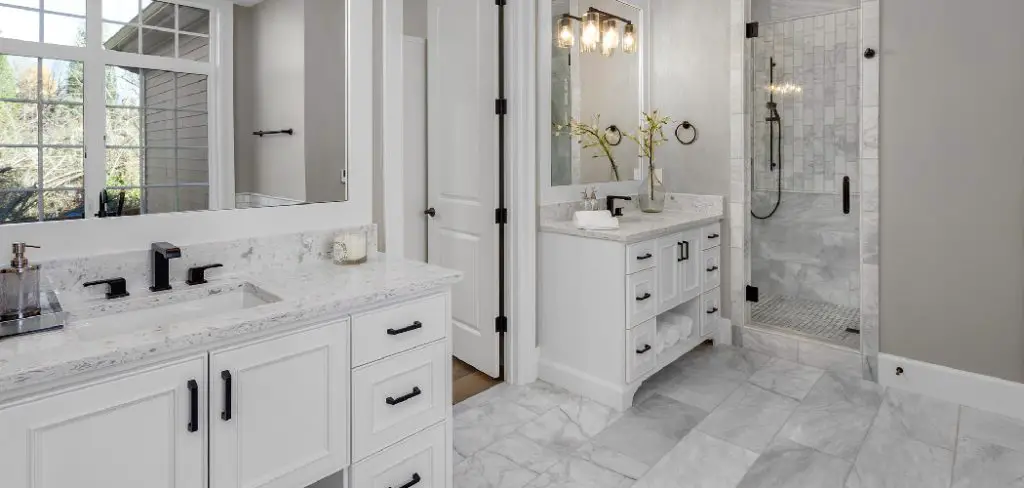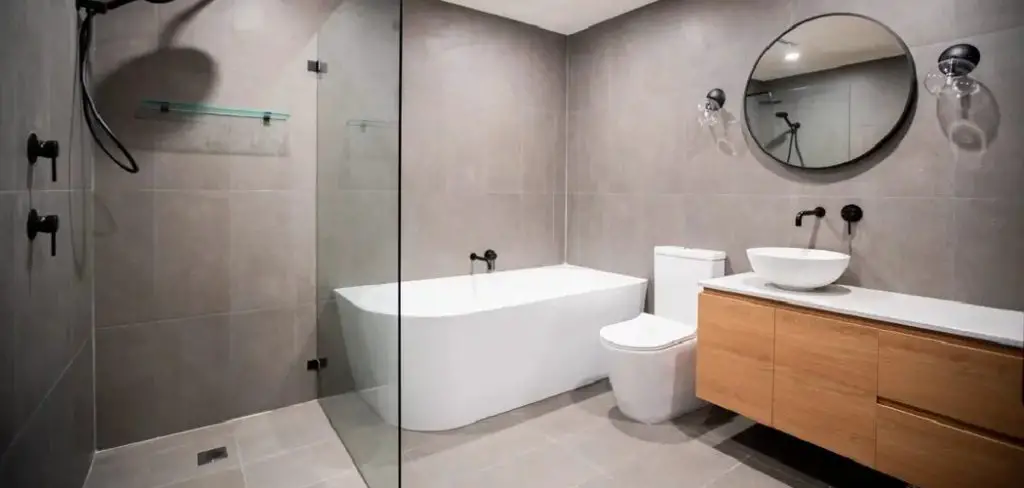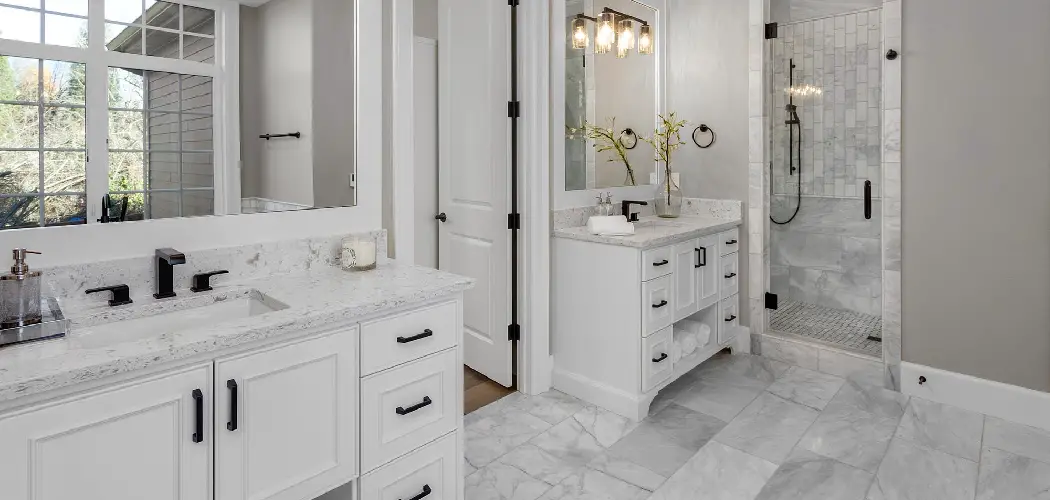To fix a bathtub that is not level, you can adjust the feet or install shims to achieve a level surface. Leveling a bathtub is important for proper water drainage and preventing future problems.
Having a bathtub that is not level can be quite frustrating. It not only affects the overall appearance of your bathroom but can also cause issues with water drainage and stability. Fortunately, fixing a bathtub that is not level is not as daunting as it may seem.
By following a few simple steps, you can easily achieve a level surface and ensure the long-term durability of your bathtub. We will explore some effective methods to fix a bathtub that is not level, allowing you to enjoy your relaxing baths without any worries. Let’s dive in!

Understanding The Problem
Is your bathtub not level? Don’t worry, this common issue can be fixed easily. In this section, we will help you understand the problem of an uneven bathtub. We will discuss how to identify a bathtub that is not level, the causes of this unevenness, and the impact it can have on your bathing experience.
Identifying A Bathtub That Is Not Level
An uneven bathtub can be easily identified if you pay attention to a few telltale signs. Here are some indicators that your bathtub may not be level:
- Water pooling in one corner or area of the tub
- Visible gaps between the tub and the surrounding walls or floor
- Difficulty in keeping the water level while bathing
- Uneven distribution of weight when standing in the tub
If you notice any of these signs, it is likely that your bathtub is not level and requires immediate attention. Now, let’s explore the causes behind this unevenness.
Causes Of Bathtub Unevenness
Understanding the causes of bathtub unevenness can help you determine the appropriate solution. Here are some common reasons for an uneven bathtub:
- Settlement of the building’s foundation
- Shifting or movement of the floor beneath the tub
- Improper installation of the bathtub
- Wear and tear over time
These factors can lead to the bathtub becoming unlevel, compromising both its aesthetics and functionality. Next, let’s explore the impact an unlevel bathtub can have on your daily bathing experience.
Impact Of A Bathtub That Is Not Level
Having a bathtub that is not level can affect your bathing experience in several ways. Here, we highlight the key ways an unlevel bathtub impacts you:
- Water accumulation in one side, making it uncomfortable and potentially hazardous
- Difficulty in properly draining the tub, resulting in stagnant water
- Uneven weight distribution may lead to instability and increased risk of accidents
- Poor aesthetic appeal, with visible gaps or misalignment
Clearly, an unlevel bathtub is not only an inconvenience but also a potential safety hazard. Addressing the issue promptly is essential to ensure your bathing experience is safe and enjoyable. In the next sections, we will explore various methods to fix a bathtub that is not level.

Fixing The Bathtub
Is your bathtub not sitting level on the floor? This can be an annoying issue, causing water to pool in certain areas and creating an uneven surface for showering or bathing. Luckily, there are a few simple steps you can take to fix a bathtub that is not level. Let’s explore these solutions below:
Assessing The Severity Of The Problem
Before jumping into any fixes, it’s important to assess the severity of the problem. Start by examining the bathtub and looking for any visible signs of unevenness. Is the tub slightly off-level or is the discrepancy more pronounced? This initial evaluation will help you determine the best course of action to fix the problem.
Adjusting Bathtub Legs Or Feet
If you notice that the bathtub is not level because of uneven legs or feet, they may need some adjustments. Begin by removing the access panel beneath the tub to gain access to the legs or feet. Then, use a level to identify which leg or foot is causing the imbalance. Once identified, use a wrench to loosen the nut securing the leg to the tub. Adjust the length of the leg or foot until the tub becomes level, and then tighten the nut to secure it in place.
Using Wedges Or Shims
In some cases, using wedges or shims can help level a bathtub. Start by determining the areas where the tub is uneven. Then, place the wedges or shims beneath the low spots to gradually raise those areas. It’s vital to use high-quality wedges or shims to ensure stability and prevent any future issues. Once the bathtub is level, remove any excess wedges or shims and check if the tub remains stable.
Leveling The Subfloor
In more severe cases where the bathtub is significantly uneven, the problem might originate from an unlevel subfloor. To level the subfloor, you will need to remove the bathtub completely. Begin by disconnecting the plumbing and removing any fixtures attached to the tub. Then, use a level to determine the uneven areas of the subfloor. Depending on the severity of the issue, you may need to add or remove subfloor material and utilize a leveling compound. Once the subfloor is level, re-install the bathtub and ensure it sits evenly.
Hiring A Professional
If the problem persists or seems too complex to fix on your own, it’s recommended to hire a professional. A qualified plumber or contractor can assess the situation, determine the underlying cause, and provide you with the most effective solution. While hiring a professional may come at an additional cost, it ensures that the bathtub is leveled correctly and prevents any future complications.
Preventive Measures
Preventing your bathtub from becoming uneven is crucial to maintaining its functionality and preventing future problems. By taking a few precautionary steps, you can ensure that your bathtub remains level and stable for many years to come.
Regularly Check For Unevenness
To prevent your bathtub from becoming uneven, it is important to regularly check for any signs of unevenness. This can be done by visually inspecting the bathtub’s position and checking if there are any gaps or spaces between the tub and the surrounding walls or floor. Additionally, you can use a level tool to measure the bathtub’s levelness accurately.
If you notice any unevenness, it is essential to address the issue promptly. Ignoring it can lead to further damages and costly repairs in the future.
Maintaining Proper Subfloor Support
Proper subfloor support is crucial for keeping your bathtub level and preventing it from sinking or becoming unbalanced. When installing a bathtub, it is important to ensure that the subfloor provides adequate support. The subfloor should be sturdy, level, and properly reinforced to distribute the weight of the tub evenly.
If you are installing a new bathtub or renovating an existing one, make sure to check the subfloor’s condition and reinforce it if necessary. Proper subfloor support can significantly contribute to the long-term stability of your bathtub.
Proper Installation And Support During Renovations
During renovations or remodeling projects involving the bathtub, it is crucial to pay attention to proper installation and support. Allowing improper installation methods or inadequate support can lead to an uneven bathtub, creating a range of issues.
Ensure that the bathtub is securely installed using appropriate techniques and materials. This may include using adjustable feet for leveling, reinforcing the frame, and using suitable adhesives. If you are unsure about the installation process, it is recommended to seek professional assistance to ensure optimal support and levelness.
Frequently Asked Questions On How To Fix A Bathtub That Is Not Level
How Do I Know If My Bathtub Is Not Level?
If you notice water pooling in one area or your bath products sliding to one side, it’s likely that your bathtub is not level. You can also use a level tool to check for any unevenness in the surface of the tub.
Why Is It Important To Have A Level Bathtub?
A level bathtub is essential to prevent water from pooling in one area and to ensure proper drainage. If your bathtub is not level, it can lead to water damage, mold growth, and an uncomfortable bathing experience.
Can I Fix A Bathtub That Is Not Level Myself?
Yes, you can fix a bathtub that is not level yourself. Start by removing the old caulk and leveling the tub using shims. Once the tub is level, apply a new bead of caulk around the edges. It’s a straightforward DIY project that can save you money on hiring a professional.
Conclusion
Fixing a bathtub that is not level is a common problem that can be easily resolved. By following the steps outlined in this blog post, homeowners can ensure a stable and even bathtub installation. Remember to check for any underlying issues, level the tub using shims, and secure it properly to prevent future problems.
With a level bathtub, you can enjoy a comfortable and relaxing bathing experience without any worries.

